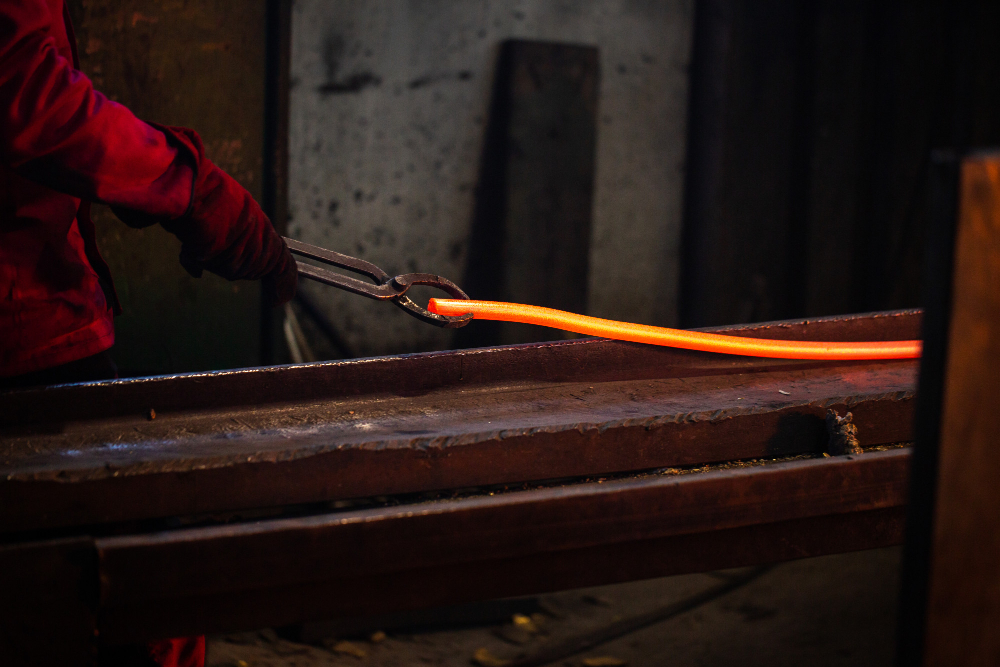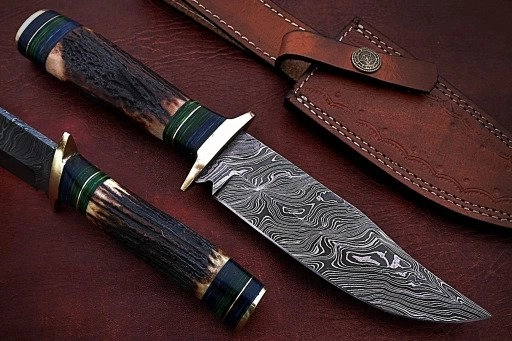By Super Admin - 22 March 2023
How to Make Damascus Steel
Learn how to make Damascus steel with our complete guide, including techniques, materials, and tips. Create beautiful and unique blades today.

How to Make Damascus Steel: Complete Guidelines
Introduction
If you're interested in learning how to make Damascus steel, then you're in the right place. Damascus steel is a type of steel that has been used for centuries to make high-quality swords and other types of weapons. It is known for its distinctive patterns and exceptional durability. In this article, we'll provide a step-by-step guide on how to make Damascus steel, along with some tips and tricks to help you get the best results. Whether you're a seasoned blacksmith or just starting, this guide will provide you with all the information you need to create your own beautiful and functional Damascus steel.

What is Damascus Steel?
Damascus steel is a type of steel that has been used for centuries to create high-quality swords and other weapons. It is known for its unique pattern, which is created by forging together different types of steel. Damascus steel is highly valued for its durability, sharpness, and beauty. It has been used throughout history by warriors and craftsmen alike, and it continues to be popular today for its distinctive appearance and exceptional performance.
Popular Types of Damascus Steel
Popular types of Damascus steel include:
Twist pattern:
This type of Damascus steel has a distinct twist or spiral pattern that is created by twisting the steel during the forging process.
Random pattern:
As the name suggests, this type of Damascus steel has a random pattern that is created by folding and forging the steel several times to create multiple layers.
Ladder pattern:
This type of Damascus steel has a ladder-like pattern that is created by repeatedly folding the steel in a specific way.
Raindrop pattern:
This type of Damascus steel has a pattern that looks like raindrops or teardrops. It is created by forging the steel in a way that creates small depressions or craters in the surface.
Materials Needed to Make Damascus Steel
To make Damascus steel, you will need a few key materials. The first ingredient is iron, which is the base metal for steel. You can use any type of iron for this, including wrought iron or scrap iron. The second ingredient is high-carbon steel, which will be used to create the blade's cutting edge. You can use any high-carbon steel, such as 1084 or 1095. Other materials that may be needed include flux, which is used to prevent oxidation during the forging process, and a forge, which is used to heat and shape the steel. You may also need other tools and equipment, such as hammers, tongs, and an anvil. It's important to note that making Damascus steel requires a high degree of skill and experience, so if you're new to blacksmithing, it's best to start with simpler projects before attempting to make Damascus steel.
The Process of Making Damascus Steel
The process of making Damascus steel is a step-by-step procedure that is vital in producing a sturdy and stunning steel piece. Here is a guide to making Damascus steel:
Preparation of the materials: To start, choose the iron and high-carbon steel for your billet. Cut them into strips of equal size and clean them before forging. Then, apply flux to the steel to prevent oxidation.
Forging the billet: Heat the steel in a forge until it reaches a temperature of about 2,200 degrees Fahrenheit. Next, use a hammer to pound the two pieces together until they merge into a single billet. This process is called welding.
Repeating the process to create more layers: Heat the billet in the forge again and fold it over onto itself. Repeat this process several times to create multiple layers of steel. This will form the recognizable pattern of Damascus steel.
Shaping and finishing the steel: After creating the desired number of layers, shape the billet into the shape you want, like a blade or a bar. Use a grinder or file to smooth out any rough edges, and then heat-treat the steel to boost its strength and durability. Finally, polish the steel to show off its unique pattern and shine.
It's crucial to keep in mind that making Damascus steel requires a high level of experience and expertise. Therefore, it's best, to begin with, simpler projects before attempting to make Damascus steel. With practice and patience, anyone can learn to create this attractive and practical type of steel.
Tips and Tricks for Making Damascus Steel
Making Damascus steel is a complex process that requires skill, patience, and attention to detail. Here are some tips and tricks to help optimize the quality of your final product and troubleshoot common problems that may arise during the process:
Use high-quality materials: The quality of your Damascus steel will be heavily influenced by the quality of the iron and steel you use. Be sure to source materials from reputable suppliers and check their carbon content before starting.
Keep your workspace clean: Contamination can ruin your billet, so make sure your workspace is clean and free of debris before starting. Use gloves and a respirator to protect yourself from potential health hazards.
Use the right tools: Forging Damascus steel requires specialized tools like a forge, an anvil, and a hammer. Invest in quality tools and make sure they are properly maintained to ensure optimal performance.
Monitor temperature carefully: The temperature of your forge can have a significant impact on the quality of your billet. Use a temperature gauge to ensure that your forge is at the correct temperature for each step of the process.
Be patient: Damascus steel requires multiple rounds of forging and folding, and each round can take hours. Don't rush the process, and take breaks when you need to avoid fatigue.
Troubleshoot common problems: If you notice cracks or delamination in your billet, it may be due to insufficient heat or improper welding. Adjust your technique as needed and try again.
By following these tips and tricks, you can create high-quality Damascus steel that is both beautiful and functional. Remember that practice makes perfect, so don't be afraid to experiment and try new techniques.
Conclusion
In conclusion, making Damascus steel is a complex process that involves several steps, including selecting and preparing materials, forging the billet, creating multiple layers, and shaping and finishing the steel. With patience and practice, anyone can learn to make this beautiful and functional type of steel. To optimize the quality of the final product, it is important to use high-quality materials, maintain a consistent temperature during the forging process, and pay close attention to each step of the process. If problems arise, troubleshoot by adjusting the heat or pressure or seeking advice from experienced Damascus steel makers. In the end, the art of making Damascus steel can bring a great sense of satisfaction and pride, as well as a unique and beautiful piece of steel that is both strong and functional.
You might also like

10 Ways to Carry a Fixed Blade Knife
By Super Admin - 20 October 2023
Discover expert tips for safely and stylishly carrying a fixed-blade knife with our top 10 methods. Whether you're an outdoor enthusiast or a daily carrier, find the perfect way to keep your trusted tool by your side.

How to Sharpen a Hunting Knife: A Comprehensive Guide
By Super Admin - 9 October 2023
Learn the art of sharpening a hunting knife like a pro with our expert tips and comprehensive guide. Keep your blade in top-notch condition.

Best Throwing Knives for Survival in 2023
By Super Admin - 6 October 2023
Discover the top throwing knives for survival in 2023 - expert reviews and buying guide. Equip yourself for ultimate survival!

Best 308 Hunting Rifle under $1000
By Super Admin - 3 October 2023
Discover the best .308 hunting rifles under $1000 in our comprehensive guide. Find your ideal firearm for the hunt today!
Baramdat - AI-Powered Platform for Exporters & Buyers
Revolutionizing global trade with intelligent tools for exporters and buyers. Exporters can easily list products, manage inventory, generate invoices, and promote their business worldwide — all in one place. Buyers can explore verified exporters, compare products, and connect directly via SMS, phone, WhatsApp, or email.
Powered by Muawin – Your AI Assistant, Baramdat helps both exporters and buyers trade smarter, faster, and more efficiently.
Haven’t experienced the power of Baramdat yet?
Join Free Now